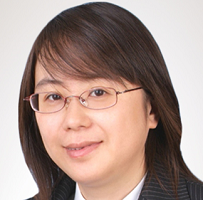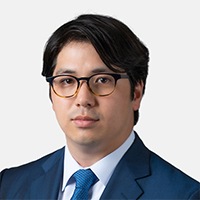Tag Archives: Japan
SPIVA Japan Scorecard 2023: Misfortune for Japanese Stock Pickers
Since the first publication of the S&P Indices Versus Active (SPIVA®) U.S. Scorecard in 2002, S&P Dow Jones Indices has regularly reported on the relative performance of actively managed funds versus benchmark indices across an increasing number of global fund markets and fund categories.1 The SPIVA Japan Scorecard has been tracking the performance of active…
- Categories Equities
- Other Tags
- Categories
- Equities
- Other Tags
SPIVA Japan Scorecard 2022: Active Underperformance Despite an Abundance of Opportunities
The inaugural S&P Indices versus Active (SPIVA®) U.S. Scorecard was published in 2002, and has since been extended to Australia, Canada, Europe, India, Japan, Latin America, South Africa and the Middle East & North Africa (MENA), allowing investors to experience the active versus passive debate on a global scale. The SPIVA Japan Scorecard measures the…
- Categories Equities
- Other Tags
Diversification and Performance: Potential Applications of U.S. Equities in Japan
The U.S. equity market is by far the largest in the world, representing 57.7% of the global market capitalization, and it is nearly nine times the size of the Japanese equity market (see Exhibit 1). Hence, Japanese investors may wish to consider U.S. equities in order to not overlook a significant portion of the global…
- Categories Equities
- Other Tags
No Time to Thrive
S&P DJI has just released the final regional edition of our S&P Index Versus Active (SPIVA®) Mid-Year 2021 Scorecards. The semiannual reports cover the performance of actively managed funds in the U.S., Canada, Latin America, Europe, South Africa, India, Japan, Australia, and our newest regional addition, the Middle East and North Africa (MENA). SPIVA Scorecards…
- Categories Equities, Fixed Income
-
Other Tags
2021, Active, active management, Active vs. Passive, ASX, Australia, Brazil, BSE, canada, Canada FA, Chile, Europe, Index Investment Strategy, India, Latin America, Mexico, Passive, S&P 500, S&P Brazil BMI, S&P BSE 100, S&P Chile BMI, S&P Europe 350, S&P Pan Arab Composite, S&P TOPIX 150, S&P/ASX 200, S&P/BMV IRT, S&P/TSX Composite, Sherifa Issifu, South Africa, SPIVA, SPIVA Around the World, SPIVA Australia, SPIVA Canada, SPIVA Europe, spiva india, SPIVA Japan, SPIVA Latin America, SPIVA Mena, SPIVA South Africa, SPIVA U.S., TOPIX, TSX, US FA
- Categories
- Equities, Fixed Income
- Other Tags
- 2021, Active, active management, Active vs. Passive, ASX, Australia, Brazil, BSE, canada, Canada FA, Chile, Europe, Index Investment Strategy, India, Latin America, Mexico, Passive, S&P 500, S&P Brazil BMI, S&P BSE 100, S&P Chile BMI, S&P Europe 350, S&P Pan Arab Composite, S&P TOPIX 150, S&P/ASX 200, S&P/BMV IRT, S&P/TSX Composite, Sherifa Issifu, South Africa, SPIVA, SPIVA Around the World, SPIVA Australia, SPIVA Canada, SPIVA Europe, spiva india, SPIVA Japan, SPIVA Latin America, SPIVA Mena, SPIVA South Africa, SPIVA U.S., TOPIX, TSX, US FA
How Carbon Weight Adjustment May Reduce Carbon Intensity among Asian Equities
In a previous blog, we reviewed the carbon efficiencies of Asian companies in comparison with their global industry group peers. In this blog, we examine the potential carbon intensity1 reduction on various Asian markets by incorporating a carbon weight adjustment to their respective S&P Global BMI index universes, following the S&P Global Carbon Efficient Index…
- Categories Sustainability, Thematics
- Other Tags
Are Asian Companies More or Less Carbon Efficient Than Their Global Peers?
With the launch of the S&P Global Carbon Efficient Index Series in 2018, S&P DJI introduced the S&P Carbon Global Standard, a proprietary carbon classification system that assigns carbon deciles to companies within their respective industry groups. The framework uses carbon-to-revenue footprint (carbon intensity) for companies in the S&P Global LargeMidCap to determine carbon decile…
- Categories Sustainability, Thematics
- Other Tags
Dissecting the Asset- and Equal-Weighted Fund Performance from the SPIVA® Japan Year-End 2019 Scorecard
In the SPIVA® Japan Year-End 2019 Scorecard, we evaluated the percentage of Japanese active funds that underperformed their respective benchmark indices, as well as the average fund returns on an equal- and asset-weighted basis. Equal-weighted returns are a measure of average fund performance, while asset-weighted returns are a measure of the performance of the total…
- Categories Equities
- Other Tags
JPX/S&P CAPEX & Human Capital Index: Linking CAPEX and Human Capital to Investment Opportunity
Human capital, physical capital, and technology have been widely recognized as a fundamental source of economic growth.[1] Dating back to the 1960s and early 1970s, when we saw a rapid increase in educated workers, facilities, and technological catch-up, Japan’s “economic miracle” emerged along with impressive GDP and per capita output growth.[2] Nowadays, these factors are…
- Categories Strategy, Sustainability
- Other Tags
Using the S&P/JPX Dividend Aristocrats® to Invest in Japanese Dividend Growers
While some dividend-paying companies give out occasional and unsustainable dividends, dividend-growing companies—such as household names like Coca-Cola, Exxon Mobile, and AT&T in the U.S.—provide steadily increasing dividend payouts every year. These long-standing dividend growers are called “Dividend Aristocrats,” and there are two reasons for it. First, with successful business operations and disciplined financial management, they…
- Other Tags
What Is the Impact of a Company’s Environmental Data on its Weight in an Index?
One of the key objectives for the recently launched S&P/JPX Carbon Efficient Index is to motivate companies within the baseline index, TOPIX, to increase their level of environmental disclosure. By incorporating a mechanism to adjust constituent weights by their respective environmental data, the S&P/JPX Carbon Efficient Index has been designed to incentivize all companies, regardless…
- Categories Sustainability
- Other Tags
















































